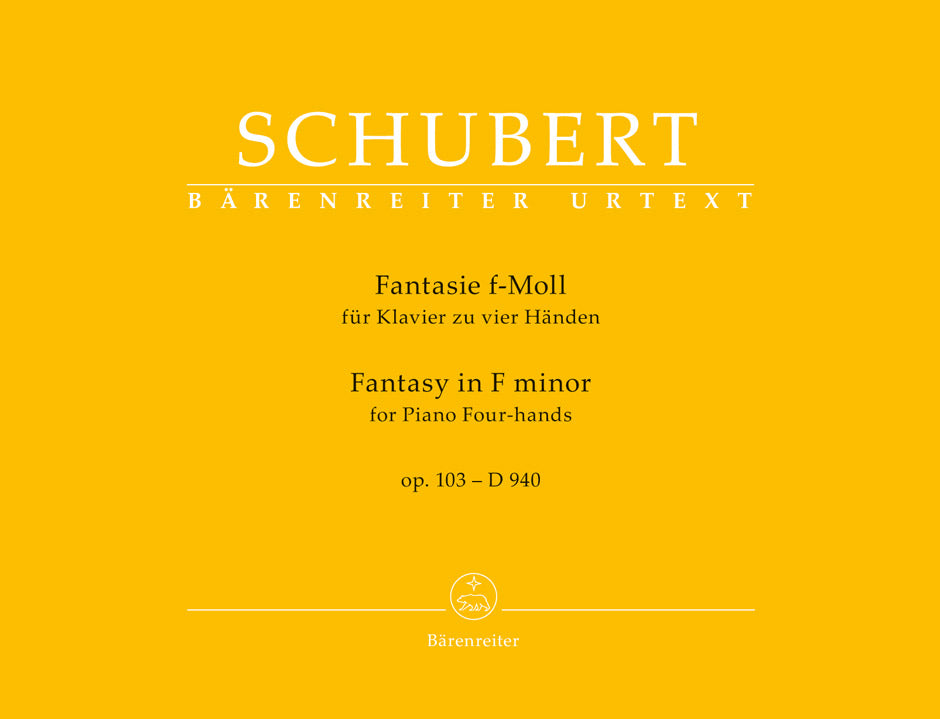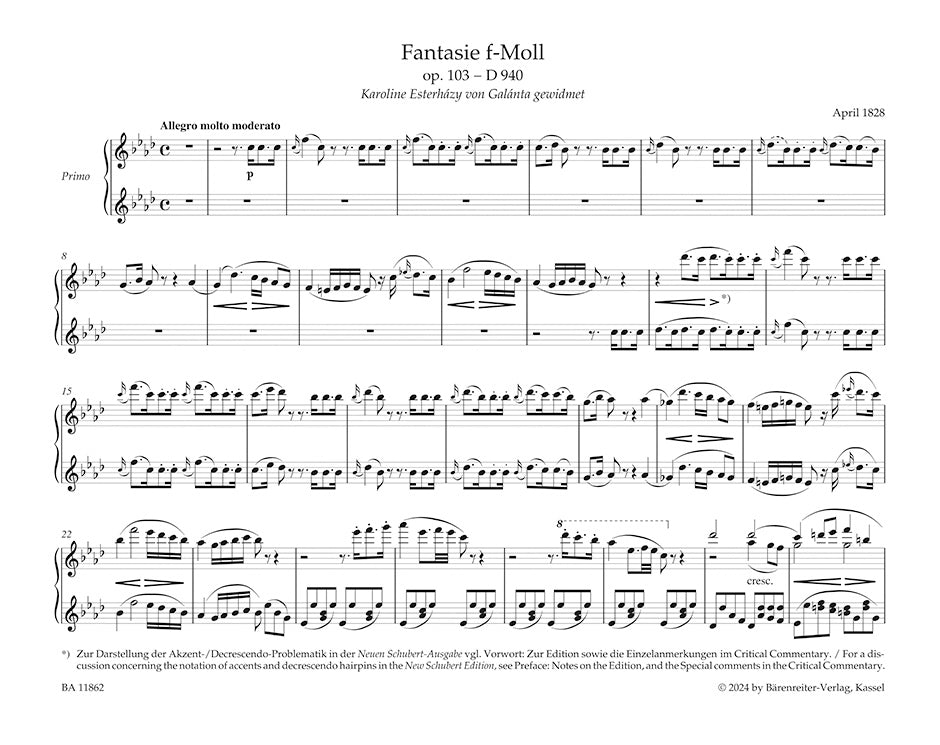Schubert: Fantasy in F Minor, D 940, Op. 103
In stock and typically ships within 1 business day.
- Composer: Franz Schubert (1797-1828)
- Editor: Walburga Litschauer
- Instrumentation: Piano 4-Hands
- Work: Fantasy in F Minor, D 940, Op. 103
- ISMN:
- Size: 12.0 x 9.4 inches
- Pages: 33
- Urtext / Critical Edition
Description
Schubert's Fantasy in F Minor is one of the most important compositions in the piano four-hands repertoire. Its four thematically related movements are played one after the other without interruption. The work was composed between January and April 1828, the year of Schubert's death. It is dedicated to his student Karoline von Esterházy, with whom he is said to have had an unhappy love affair. Schubert did not live to see the publication of the fantasy in March 1829 by A. Diabelli & Co. in Vienna.
This Urtext edition is based on the authoritative musical text of the "New Schubert Edition". An informative Foreword and valuable notes on the performance practice of Schubert's time (including articulation, use of pedal, ornamentation) with a special focus on Schubert's characteristic notation of accent markings of varying lengths introduce the fantasy. The Critical Commentary (Eng) lists relevant readings regarding interpretation. The new edition is published in a reader-friendly landscape format with parts for Primo and Secondo and practical page turns. Schubert's draft's and fragments are accessible via the Bärenreiter website.
Publishers use a lot of words to describe what they sell, and we know it can be confusing. We've tried to be as clear as possible to make sure you get exactly what you are looking for. Below are descriptions of the terms that we use to describe the various formats that music often comes in.
Choral Score
A score for vocalists that only contains the vocal lines. The instrumental parts are not there for reference. Generally, cheaper than a vocal score and requires multiple copies for purchase.
Facsimile
Reproductions of the original hand-written scores from the composer.
Full Score
For ensemble music, this indicates that the edition contains all parts on a single system (there are not separate parts for each player). In larger ensembles, this is for the conductor.
Hardcover
Hardbound. Generally either linen-covered or half-leather.
Orchestral Parts
Similar to a wind set, this is a collection of parts. In the case of strings, the numbers listed are the number of copies included, though generally these are available individually (often with minimum quantities required).
Paperback
When publishers offer multiple bindings (e.g. hardcover) or study scores, this is the "standard" version. If you're planning to play the music, this is probably what you want.
Performance / Playing Score
A score of the music containing all parts on one system, intended for players to share. There are not separate parts for each player.
Set of Parts
For ensemble music, this indicates that there are separate individual parts for each player.
Solo Part with Piano Reduction
For solo pieces with orchestra, this is a version that contains a piano reduction of the orchestra parts. For piano pieces, two copies are typically needed for performance.
Study Score
A small (think choral size) copy of the complete score meant for studying, and not playing. They make great add-ons when learning concertos and small chamber works.
Vocal Score
A score prepared for vocalists that includes the piano/organ part or a reduction of the instrumental parts.
Wind Set
For orchestral music, this is a collection of wind and percussion parts. The specific quantities of each instrument are notated.
With Audio
In addition to the printed music, the edition contains recordings of the pieces. This may be an included CD, or access to files on the internet.
With / Without Fingering (Markings)
Some publishers prepare two copies - a pure Urtext edition that includes no fingering (or bowing) suggestions and a lightly edited version that includes a minimal number of editorial markings.





